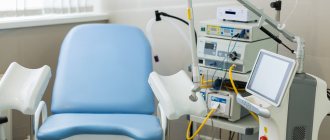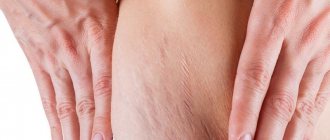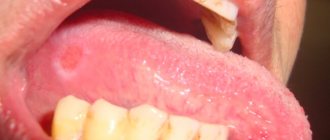Fallopian tube adhesions are the most common complication of inflammatory gynecological diseases, in which partial or complete obliteration (fusion) of the lumen of the fallopian tube occurs with connective tissue.
Untreated adhesions (synechias) cause obstruction of the uterine (fallopian) tubes, which can lead to infertility, as well as a high risk of developing an ectopic pregnancy. According to medical statistics, every fourth case of female infertility is caused by adhesions of the fallopian tubes.
Causes of microdamage:
- Microdamages to the mucous membrane of the vagina, vulva and perineum occur as a result of prolonged, frequent or rough sexual intercourse.
- Damage to the vagina during sexual intercourse can also occur as a result of discrepancies in the anatomical features of the partners. The average length of a female vagina is 7-10 cm, while the length of an erect penis is on average 13-15 cm. A difference of 3-4 cm is the most optimal for comfortable sex, since the walls of the vagina are elastic and have the ability to stretch during sexual intercourse act. However, if the difference is 5 cm or more, discomfort may occur during intimacy (especially with active frictions). To avoid mechanical damage to the vagina in such a situation, it is necessary to choose positions that involve shallow penetration.
- Often the walls of the vagina are injured during sex due to insufficient secretion of natural lubrication. This problem can be caused by both hormonal changes (in particular, due to a lack of the hormone estrogen during menopause and atrophy of the vaginal walls), and insufficient arousal of the woman due to the lack of foreplay.
- Sexually transmitted diseases can also cause microdamage to the vaginal mucosa.
- Failure to comply with the rules of daily intimate hygiene can lead to dysbacteriosis of the vagina. The protective function of the mucous membrane weakens, and, as one of the consequences, microcracks form on the walls of the mucous membrane.
If the mucous membrane of the intimate area is damaged, pain is possible
The following may also cause microtrauma to the vaginal mucosa:
- Childbirth. The passage of a child through the birth canal is almost always associated with damage to the vaginal mucosa. Depending on the size of the fetus and the nature of labor, it can be either minor or more serious, even rupture.
Expert opinion
Vaginal injuries resulting from criminal abortion deserve special attention. If there is a need to terminate a pregnancy, it should be performed exclusively by an experienced doctor and only in a medical facility. Any independent attempts to perform an abortion are traumatic, as they lead to serious damage to the vagina and uterus. Criminal abortions are extremely dangerous not only for a woman’s health, but also for her life. It is for this reason that such manipulations are a criminal offense and are prosecuted by law.
Obstetrician-gynecologist of the highest category Oksana Anatolyevna Gartleb
- Foreign body in the vagina. The insertion of a foreign object into the vagina usually occurs during masturbation. If it has a rough surface or sharp edges, abrasions and microcracks may appear on the walls of the vagina.
- Allergic reactions (including to contraceptives, vaginal suppositories, lubricants, etc.) When choosing these products, carefully study their composition: it is advisable that it does not contain latex, fragrances, dyes, or sugars.
- Decreased immunity and long-term use of antibiotics. With the deterioration of the body's defenses and uncontrolled use of antibiotics, activation of opportunistic microorganisms that are part of the normal vaginal microflora is observed. In this regard, favorable conditions are created for the development of dysbiosis, which can lead to microdamage to the walls of the vagina.
Allergic reaction in the form of itching
Microdamage to the vaginal mucosa
Laparoscopy for adhesions in the pelvis
Video from the operating room. Laparoscopic cystadnexectomy for severe adhesions
The gold standard for the surgical treatment of adhesions is laparoscopy, during which all adhesions are sequentially intersected. At the same time, I select the choice of instruments taking into account the area of intervention; when dissecting adhesions between the peritoneal wall and the omentum or intestine, I use the Liga Sure device, which allows for bloodless manipulations while simultaneously sealing the vessels. Between intestinal loops, I always use a cold method for dissection, without electrosurgery, to avoid damage to the intestinal wall with subsequent perforation.
To prevent adhesions and fusion of organs, I use special anti-adhesion barriers, which dissolve without a trace after 7-10 days. These drugs are effective in the presence of exudate and blood, are safe, encapsulation is excluded, and do not require fastening with sutures.
The advantage of laparoscopy is the absence of extensive damage; there is no drying out of the operation area, since carbon dioxide is introduced instead of air (in open surgery), which dries out the peritoneum. When washing, solutions are used, which, unlike napkins, does not injure the mesothelium. Also among the advantages of laparoscopy are the absence of blood loss and high precision of manipulation due to the possibility of visualization. To prevent adhesions and fusion of organs, I use special membranes that dissolve without a trace after 7-10 days.
Our patients are usually discharged on days 2-4; three days after discharge, we conduct a follow-up examination and make recommendations for further treatment. After laparoscopy, a woman can return to her usual lifestyle within two weeks.
I have been performing such interventions since 1993, and have performed more than 900 operations to remove adhesions. I also use modern technologies to prevent the appearance of adhesions during any surgical procedure. Thanks to the modern approach, the likelihood of developing adhesions during surgery in our clinic has been reduced tenfold.
Treatment of vaginal injuries
If any kind of mechanical damage to the vaginal walls occurs, you should consult a gynecologist. The doctor will conduct an examination on a chair (finger and with mirrors) and assess the nature of the microdamages. If the injuries were sustained as a result of dysbacteriosis or an STD, the gynecologist will also take samples of biomaterials for laboratory tests.
How to treat the disease?
Treatment depends on the nature of the injury. If it is small, usually such microdamage goes away on its own, provided that the provoking factor is eliminated. If we are talking about more serious violations of the integrity of the mucous membrane, drug treatment will be required. It usually consists of prescribing antibacterial drugs (for STDs), antifungal agents (for candidiasis), combined oral contraceptives (for hormonal imbalances) and intimate lubricants (for vaginal dryness), as well as vascular strengthening drugs and vitamin complexes. If ruptures occur, sutures will be required.
Please note: during treatment you must abstain from intimacy.
The body's natural defenses are tested daily. Hormonal changes, taking medications, and even seemingly harmless habits (wearing tight and synthetic underwear, constant use of daily sanitary pads and tampons) negatively affect the vaginal microflora, contribute to the occurrence of microdamages and the growth of pathogenic bacteria.
Changing your underwear every day will help.
How to behave?
If you have stitches in your perineum, follow a number of rules.
- In the absence of contraindications, a woman is allowed to walk by the end of the first day after birth, and to sit 2-3 days after the sutures are removed (that is, on the 7-10th day after birth). In maternity hospitals, where women eat not in the ward, but in the dining room, high tables (something resembling a bar counter) are provided for such postpartum women. The baby will need to be fed while lying down. In case of a third degree rupture, during the first days you will need to adhere to a special diet (broth, tea, fruit juices, kefir) so that there is no stool for 6-7 days. On the 7th day you will be given a laxative (you cannot push): it is advisable that the act of defecation should be as easy as possible.
- Then you will be allowed to sit half-sided, on one of the buttocks - it is recommended to sit on the side where there is no incision (this can be done on the 5th day after birth), on a hard surface. During your stay in the maternity hospital and during the week at home, after each trip to the toilet you need to treat the perineum (rinse it with running water, dry it well). It should be remembered that the washing movements should be made from front to back, from the pubis to the rectum, to reduce the likelihood of germs entering the wound. After this, it is advisable to lie down for a few minutes without underwear so that the skin dries on its own, and then you can get dressed, but do not forget to change the pads more often (every 2 hours), since the wound should be dry.
What to apply to the mucous membrane after vaginal injury?
To speed up the healing of microtraumas, you can use GINOCOMFORT intimate restorative gel, created by specialists of the pharmaceutical company VERTEX, which has undergone clinical studies at the Department of Dermatovenerology with the clinic of St. Petersburg State Medical University and has the necessary documents and quality certificates. It eliminates vaginal discomfort, manifested in the form of itching, burning, irritation and dryness. Thanks to its safe composition, which includes natural ingredients such as tea tree oil, lactic acid, chamomile extract, panthenol and bisabolol, the product helps accelerate tissue regeneration, relieve inflammation and eliminate irritation. The use of the gel is recommended to normalize the vaginal microflora and for the rapid healing of minor injuries.
What is the perineum?
The pelvic floor, or perineum, is the internal support of our body, of all our internal organs. It consists of three layers of muscles. The muscles of the lower (outer) layer are arranged in the form of a figure eight, the rings of which encircle the vagina and anus. The middle layer is represented by the triangular muscle. And finally, the upper (inner) layer is formed by the pelvic diaphragm. This is the paired and most powerful muscle of the pelvis, whose fibers create a real dome.
Such a complex structure and the close connection of the perineum with the genitourinary organs mean that this area is subject to heavy loads and plays an important role in the functioning of the organs located in the pelvis. Indeed, the pelvic floor is a support for the internal genital organs, bladder and rectum. Damage or weakness of this muscle leads to prolapse or even prolapse of organs and disruption of their functions. In addition, together with the muscles of the abdominal wall and the diaphragm (the muscular septum separating the chest and abdominal cavities), the pelvic floor is involved in the regulation of intra-abdominal pressure, and therefore affects the organs located in the abdominal cavity. During childbirth, these muscles stretch in a unique way, forming a wide tube through which the baby passes. After childbirth, they contract, returning to their previous position.
Microtrauma of the vaginal mucosa, video
is not responsible for the accuracy of the information presented in this video clip.
Source - KVD - dermatovenerological dispensary Sources:
- GENITAL INJURIES. Merritt Diane F. // Reproductive health of children and adolescents. – 2021. – No. 1. – P. 64-80.
- DRUGS FOR VAGINAL USE FOR PREVENTION AND TREATMENT OF DISORDERS OF THE FEMALE UROGENITAL ECOSYSTEM. Ayupova G.V., Fedotova A.A., Bondarenko K.R., Mavzyutov A.R., Ishemgulov A.M., Shikova Yu.V., Batyrova E.D., Petrova V.V. // News of the Samara Scientific Center of the Russian Academy of Sciences. – 2012. – No. 5 (2). – pp. 315-319.
- MANAGEMENT OF THE POSTPARTUM PERIOD IN PURTHER WOMEN WITH SOFT TISSUE INJURIES OF THE BIRTH CHANNEL. SELIKHOVA M.S., BELAN E.B., KOTOVSKAYA M.V., EFREMOVA E.B. // MEDICINE BULLETIN, Volgograd Medical Chamber. – 2012. – Volume 6, issue 8 (48). – P.7-10.
- Microbiocenosis of the vagina of modern practically healthy women of young reproductive age. V.S. Orlova, Yu.I. Naberezhnev, I.V. Budnik // Scientific bulletins. - 2008. - No. 6 (46). — P. 27-35.
- Complex therapy of bacterial vaginosis. F.F. Badretdinova, M.A. Akhmetgalieva, M.A. Nurtdinov // Medical Bulletin of Bashkortostan. - 2008. - T. 3, No. 2. P. 28-31.
- Bacterial vaginosis: clinical features, diagnosis and treatment. A.S. Ankirskaya, V.N. Prilepskaya, G.R. Bayramova and others // Russian Medical Journal. 1998. - No. 6 (5). — pp. 276-282.
- https://www.verywellhealth.com/vaginal-dryness-causes-and-treatments-3522435
- https://www.uptodate.com/contents/vaginal-dryness-beyond-the-basics?source=see_link
- https://medlineplus.gov/ency/article/000892.htm
- https://www.omicsonline.org/open-access/the-extent-of-incurred-pelvic-floor-damage-during-a-vaginal-…
Results of posterior vaginoplasty with perineoplasty
All patients operated on since 2014 at the Department of Plastic and Reconstructive Surgery at the University of Toronto, Canada, were satisfied with the operation. These were women of different ages - from 23 to 58 years old. Among them, 86.7% of patients had previously given birth vaginally several times, and 13.3% had one birth. Only one had never had a vaginal birth. The average operative time was 68 minutes.
Two women stated that, despite improvement in preoperative symptoms, they would like to further narrow the genital tract. They underwent repeat corrective vaginoplasty under local anesthesia.
Many patients underwent other plastic surgeries simultaneously with perineal and vaginal plastic surgery. The most common of them was labiaplasty - changing the shape of the labia. Many also enlarged the mammary glands and performed tummy tuck - abdominoplasty. Other aesthetic surgeries were also performed, indicating the growing desire of modern women for beauty.
Popular questions
Tell me, what can I use to treat microcracks in the labia area, near the vagina? They appeared after I scratched them and irritation appeared.
Please advise what can be done? I recommend using Ginocomfort gel with mallow extract once a day for 5-7 days. If itching is associated with an allergic reaction or irritation, then this product will moisturize and promote rapid tissue regeneration. However, if complaints persist, despite the treatment, you will need to see a specialist to clarify the cause and develop tactics for eliminating it.
I have dryness of the outer labia and there are microcracks, I took tests in different clinics and found nothing, so I don’t know how to treat it?
Let's try to moisturize this area if dryness is associated only with excessive hygiene or the use of panty liners or underwear made of synthetic materials. For this purpose, the use of Ginocomfort gel with mallow extract is suitable. Apply the gel once a day in a thin layer to the dried area for 1 week. If there is no improvement, you should consult a specialist to rule out dishormonal lesions of the mucous membranes (leukoplakia, kraurosis). If the effect is achieved, then this gel can be used for prophylactic purposes over a long period. The composition contains only natural ingredients.
Good afternoon, I am tormented by microcracks at the entrance to the vagina after sexual intercourse. All tests are normal. I'm pregnant at the moment, but I had this problem before. In general, the skin throughout the body is dry. Will any gel help me?
Hello! Cracks are formed due to a decrease in the elasticity of the dry mucosa. In this situation, the use of Ginocomfort gel with mallow extract will help moisturize and heal existing defects in the genital tract mucosa without harming the fetus. The gel can be applied either topically to the posterior commissure area or as a contact lubricant, administered using an applicator.
Hello. I have a little problem during sex. My boyfriend has a large penis for me and during sex there is a burning sensation, I begin to feel dryness towards the middle or towards the end of the process. This is my first boyfriend. Tell me, what is the problem and is it worth going to the doctor?
Hello!
Try to eliminate this problem by using additional moisturizing agents - lubricants. Ginocomfort gel with mallow extract is suitable for this purpose. It contains not only moisturizing components, but also regenerating and anti-inflammatory substances. The gel is administered in 1 dose before contact in the genital tract, and can also be applied topically to the mucous membranes of the vaginal vestibule. The duration and frequency of use is not limited. For an accurate diagnosis, contact a specialist
Preoperative preparation for vaginoplasty with perineoplasty
Vaginal laxity is a sensitive issue and consultations should be conducted in a private, comfortable environment. A complete anamnesis (life history) is collected. The following information is important for the doctor:
- Previous non-surgical treatments for vaginal narrowing.
- Medicines taken, allergies.
- Accompanying illnesses.
- The number and severity of births, the method of delivery used.
- Data on menstrual function.
- Contraception used.
- The presence or absence of urinary incontinence.
- Information about previous operations on the pelvic organs, genital infections, and malignant neoplasms.
The doctor carefully examines the patient’s complaints. If the main reason for plastic surgery is the dissatisfaction of the partner, the woman is explained that vaginoplasty and perineoplasty may not solve the problem. The decision should always be the patient's personal choice. Only then does the operation make sense.
A doctor on a gynecological chair examines the external genitalia, paying attention to the distensibility of the vagina, the presence of an open vaginal opening, the length of the perineum - the distance between the anus and the posterior point of the vagina, the presence of scars on the genitals. The presence of hemorrhoids is checked - the acute form of the disease is considered a contraindication to plastic surgery. Such patients need treatment from a proctologist.
The woman is checked for pelvic organ prolapse.
Pelvic organ prolapse
In the absence of results of a routine gynecological examination, a gynecologist takes smears from the genital tract and urethra, as well as from the cervix for oncology - a Papanicolaou smear.
If the need for surgery is confirmed, the gynecologist surgeon prescribes a preoperative examination to exclude contraindications. The woman takes blood tests - general blood tests, coagulation tests and an ECG. If necessary, a pregnancy test is performed, and other diagnostic methods may be prescribed.










